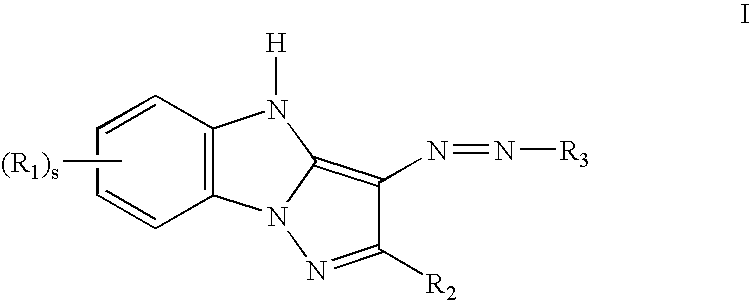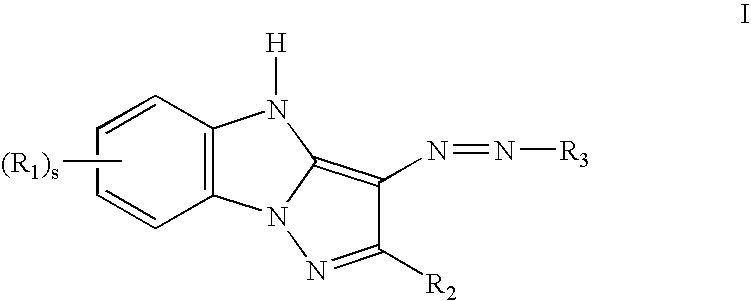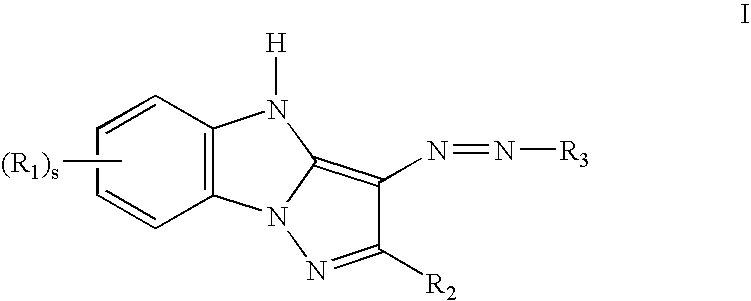Solubilized dyes for inks
a technology of ink jet and dye, which is applied in the field of new dyes, can solve the problems of difficult to find a dye which possesses all of the above attributes, the yellow dye currently in commercial aqueous ink formulations is less than optimal in one property, and the stability of atmospheric ozone is not sufficient, so as to achieve good color, light fastness, and fade resistance. good
- Summary
- Abstract
- Description
- Claims
- Application Information
AI Technical Summary
Benefits of technology
Problems solved by technology
Method used
Image
Examples
examples
Preparation of Inventive dye I-1
[0072]
[0073]With stirring, sodium nitrite (3.0 g, 0.043 mol) was added to 28 mL of precooled sulfuric acid in a medium sized beaker. The mixture was heated to 60–65° C. until all solid was dissolved. It was then placed back in an ice water bath and cooled to 15° C. To it was added 28 mL of a mixture of 1 part propionic acid and 5 parts acetic acid. The temperature rose to 30° C., and the mixture was stirred for 20 minutes until the temperature was <10° C. To the nitrosyl sulfuric acid mixture was added a slurry of finely ground pyrazole 1 (14.47 g., 0.036 mol.) in 72 mL of propionic acid. The mixture thickened and became a yellow-brown color. It was stirred a total of 2 hrs in an ice bath at 10° C. Meanwhile, coupler 2 (6.39 g, 0.03 mol) was dissolved in 60 mL of 3M aqueous NaOH, and 60 mL water, with a little mtethanol to get complete dissolution, and cooled in ice with stirring. To the cooled, stirred coupler solution was added the diazonuim solutio...
PUM
| Property | Measurement | Unit |
|---|---|---|
| weight percent | aaaaa | aaaaa |
| temperature | aaaaa | aaaaa |
| temperature | aaaaa | aaaaa |
Abstract
Description
Claims
Application Information
 Login to View More
Login to View More - R&D
- Intellectual Property
- Life Sciences
- Materials
- Tech Scout
- Unparalleled Data Quality
- Higher Quality Content
- 60% Fewer Hallucinations
Browse by: Latest US Patents, China's latest patents, Technical Efficacy Thesaurus, Application Domain, Technology Topic, Popular Technical Reports.
© 2025 PatSnap. All rights reserved.Legal|Privacy policy|Modern Slavery Act Transparency Statement|Sitemap|About US| Contact US: help@patsnap.com



